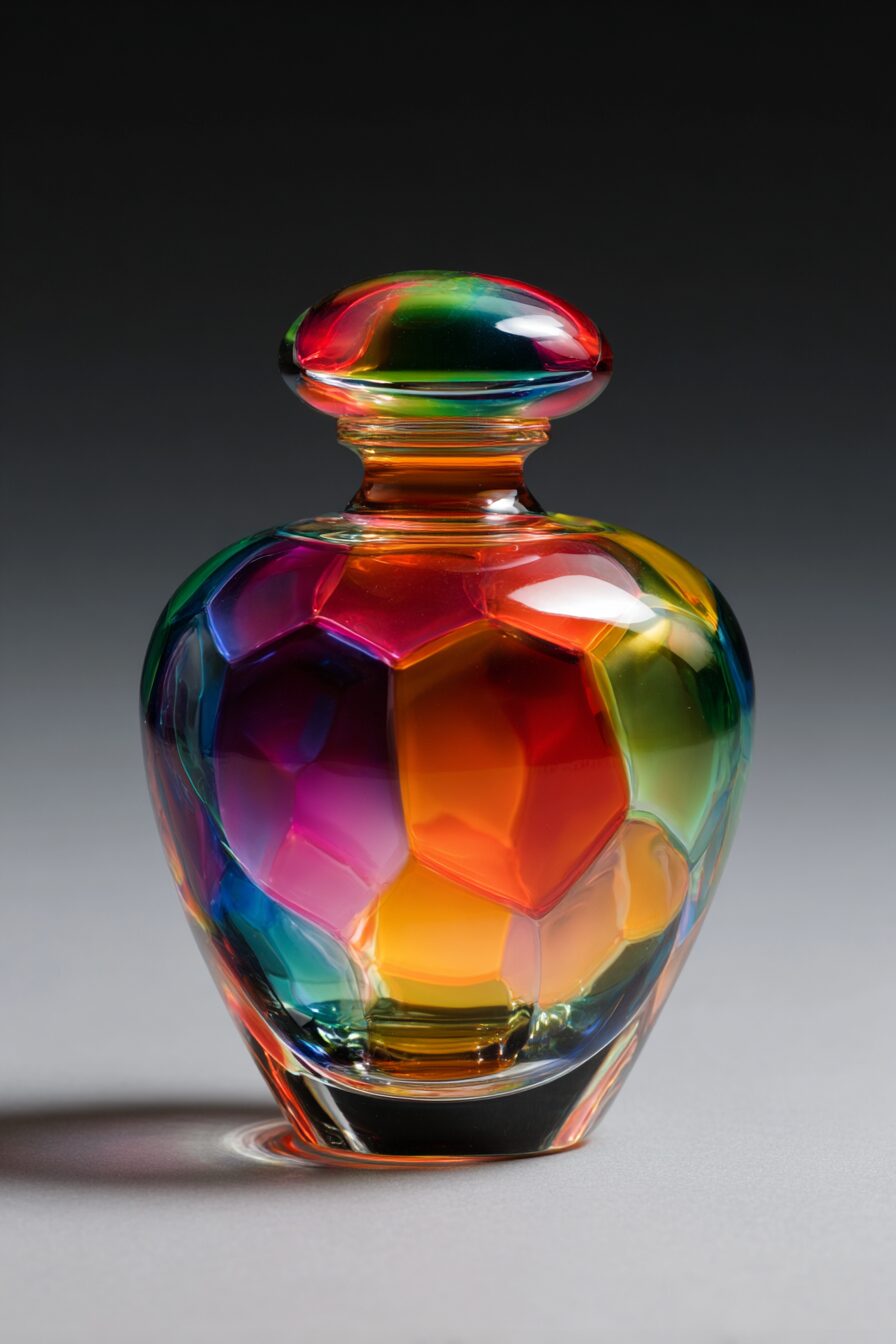Crystal glassware represents the pinnacle of artistic craftsmanship, combining technical mastery with timeless elegance that has captivated collectors for centuries.
When light catches a perfectly cut crystal piece, the resulting rainbow of prismatic colors creates a magical display that modern glassware simply cannot replicate.
These sparkling treasures have graced the tables of royalty and the cabinets of discerning collectors for generations, each piece telling a unique story of its era.
Baccarat Crystal Decanters
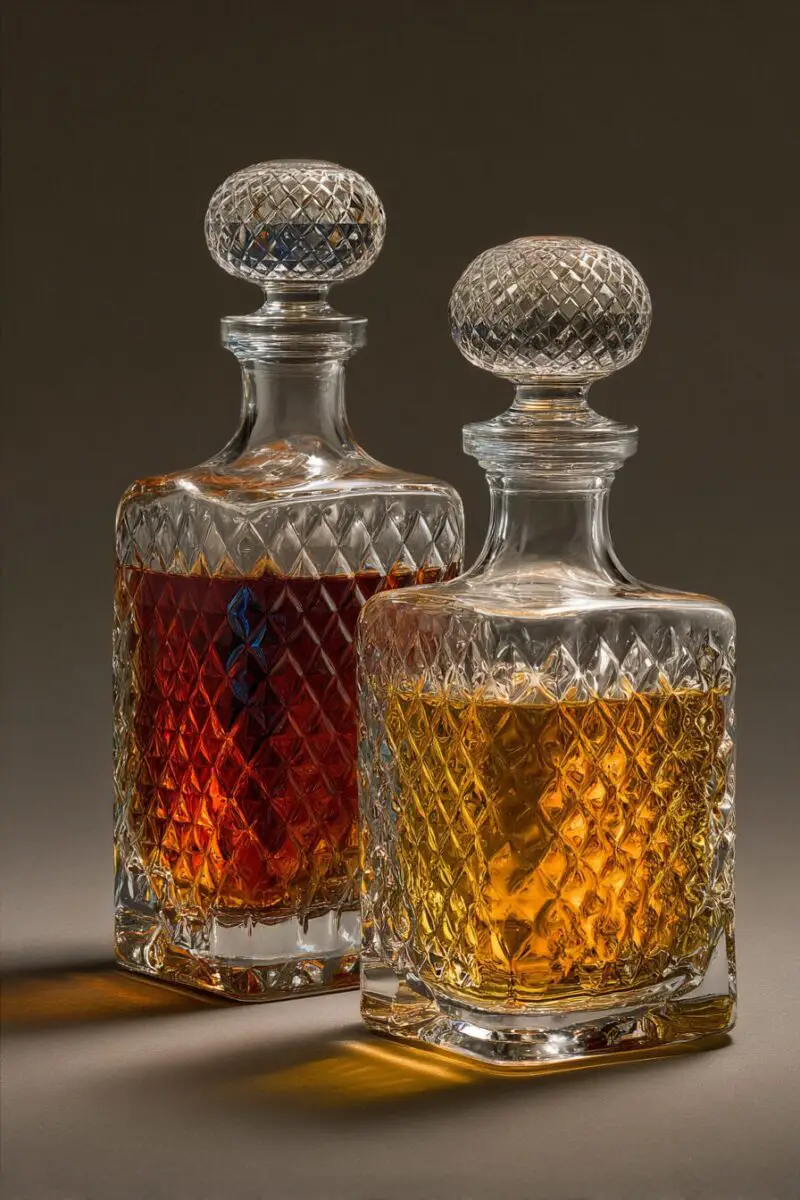
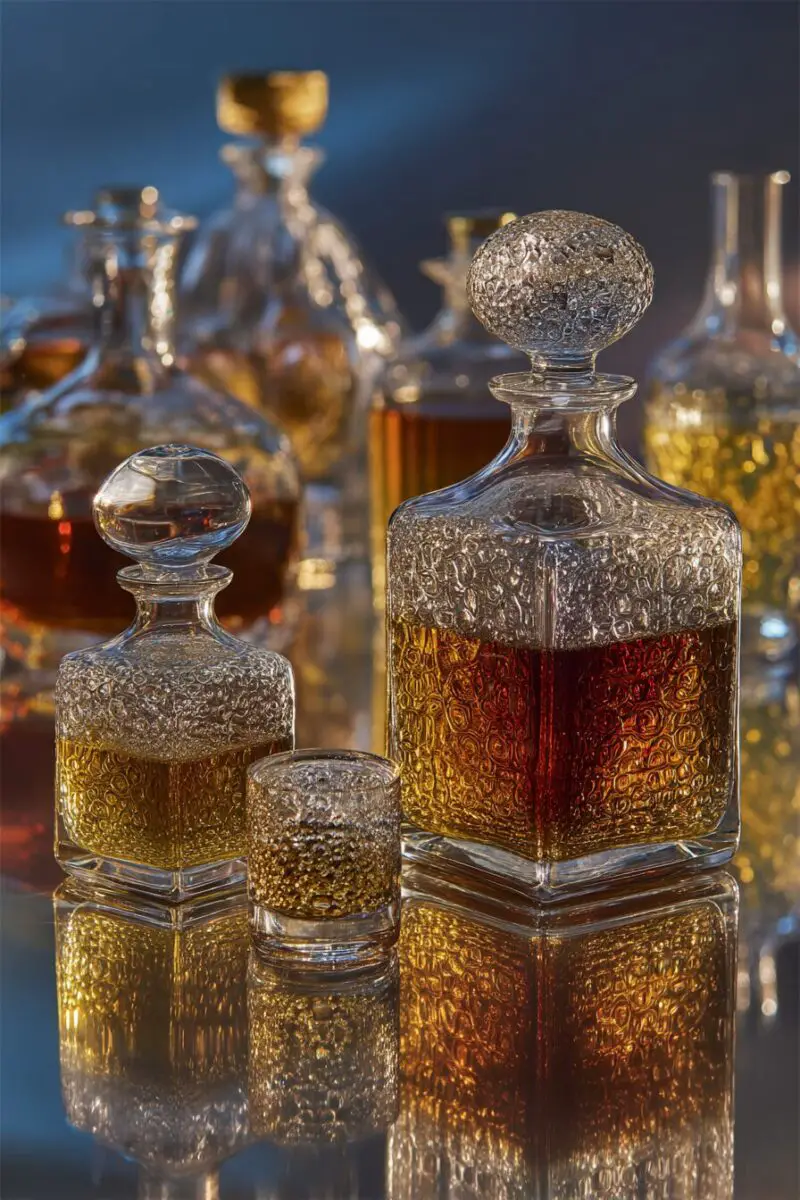
Baccarat crystal decanters stand as true aristocrats in the world of antique glassware, with a heritage dating back to 1764 when King Louis XV authorized the establishment of the glassworks in the French town of Baccarat.
These magnificent decanters aren’t just vessels for spirits but are historical artifacts that have graced the tables of European nobility for generations.
The distinctive Baccarat hallmark—typically etched on the bottom of authentic pieces—features the company name and often includes a date code that helps pinpoint exactly when the piece was created.
Genuine Baccarat crystal produces a clear, resonant “ping” when gently tapped with your fingernail, a characteristic that distinguishes it from ordinary glass imitations.
The deep, complex cutting patterns found on antique Baccarat decanters create mesmerizing prismatic effects when light passes through them, casting rainbow-colored reflections across your tabletop.
Collectors particularly prize the Napoleon III era Baccarat decanters (1850s-1870s), which feature exceptionally intricate cutting, often combined with gilt bronze mounts that elevate them to museum-quality treasures.
The craftsmanship of these decanters reveals itself in the perfectly fitted stoppers, which were ground specifically for each individual bottle—a level of precision that modern manufacturing rarely achieves.
Vintage Baccarat decanters often showcase the Empire, Restoration, and Louis Philippe styles, incorporating neoclassical motifs that reflect the artistic sensibilities of their respective eras.
The ruby-red and cobalt blue overlay decanters represent some of the most sought-after Baccarat pieces, where a layer of colored glass is carved away to reveal the clear crystal beneath, creating stunning contrast.
When examining potential purchases, always check for damaged stoppers, chips along the base, or repairs—even minor flaws can significantly impact both the aesthetic appeal and investment value of these extraordinary pieces.
Baccarat’s mastery of the “millefiori” technique resulted in some of the most spectacular paperweight-style decanters, where tiny glass flowers appear to be suspended within the crystal itself.
The weight of an authentic Baccarat decanter provides another clue to its authenticity—the substantial heft comes from the high lead content (up to 30%) that gives the crystal its characteristic brilliance and resonance.
Caring for these treasures requires gentle hand washing with mild soap, avoiding extreme temperature changes, and storing them away from direct sunlight to prevent the lead crystal from developing a yellowish tinge over time.
Beyond their aesthetic value, antique Baccarat decanters often appreciate significantly over time, with rare examples from the 19th century regularly commanding five-figure prices at specialized auctions.
The romantic history of these decanters includes their presence at diplomatic negotiations, royal coronations, and historic peace treaties—making them not just beautiful objects but witnesses to pivotal moments in European history.
Waterford Crystal Chandeliers

Waterford crystal chandeliers represent the pinnacle of Irish craftsmanship, having illuminated the grandest spaces from castles to opera houses since the company’s founding in 1783.
These magnificent lighting fixtures transform any room into a space of distinction, with each crystal pendant acting as a miniature prism that splinters light into countless rainbow fragments.
Authentic antique Waterford chandeliers feature hand-cut crystal that contains a higher lead content than modern versions, giving vintage pieces unmatched brilliance and a distinctive weight that feels substantial in your hand.
The iconic “Waterford sparkle” comes from the company’s proprietary cutting techniques that create deeper, more precise facets than competitors, resulting in exceptional light refraction that seems to make the crystal come alive.
Historical Waterford chandeliers showcase the “wedge cut” pattern—a signature technique where artisans cut a series of V-shaped grooves that create remarkable prismatic effects even in modest candlelight.
The most valuable Waterford chandeliers date from the “First Period” (1783-1851), before the original factory closed due to excessive taxation, making these pre-1851 examples exceedingly rare and historically significant.
During the Georgian and Regency periods, Waterford created chandeliers with neoclassical influences, featuring elegant arms arranged in balanced tiers and adorned with hand-cut crystal pendants that move gently with air currents.
Collectors particularly prize Waterford chandeliers that retain their original documentation or provenance connecting them to historic buildings, aristocratic families, or notable designers.
Unlike mass-produced lighting, each antique Waterford chandelier bears subtle variations that reveal its handcrafted nature—slight differences in cutting patterns or crystal arrangement that tell the story of the individual artisan who created it.
The craftsmanship involved in creating these masterpieces was so demanding that apprentice crystal cutters traditionally spent seven years mastering their craft before being allowed to work on chandelier components.
Genuine Waterford crystal has a distinct musical resonance—gently running your moistened finger around the rim of a Waterford crystal bowl or glass creates a clear, sustained tone that cheaper crystal cannot reproduce.
When examining potential Waterford chandelier purchases, always look for the acid-etched mark (typically a seahorse or simply “Waterford” on older pieces) and be aware that the absence of a mark on very old pieces doesn’t necessarily indicate inauthenticity.
The arms of authentic antique Waterford chandeliers were typically crafted from brass or bronze before being silver-plated or gilded, and the patina that develops on these metal components over decades provides important clues to the piece’s age and authenticity.
Maintaining these treasures requires special care—professional cleaning every few years using mild solutions and soft cloths, along with careful dusting with a natural bristle brush to preserve both the crystal and metalwork.
Beyond their aesthetic splendor, antique Waterford chandeliers connect you to pivotal moments in design history, including the transition from candle to gas lighting and eventually to electricity, often with the same fixture being adapted across these technological shifts.
Design Your Dream Room in Minutes!
🏡 Start Creating FREE →Bohemian Ruby Red Glassware
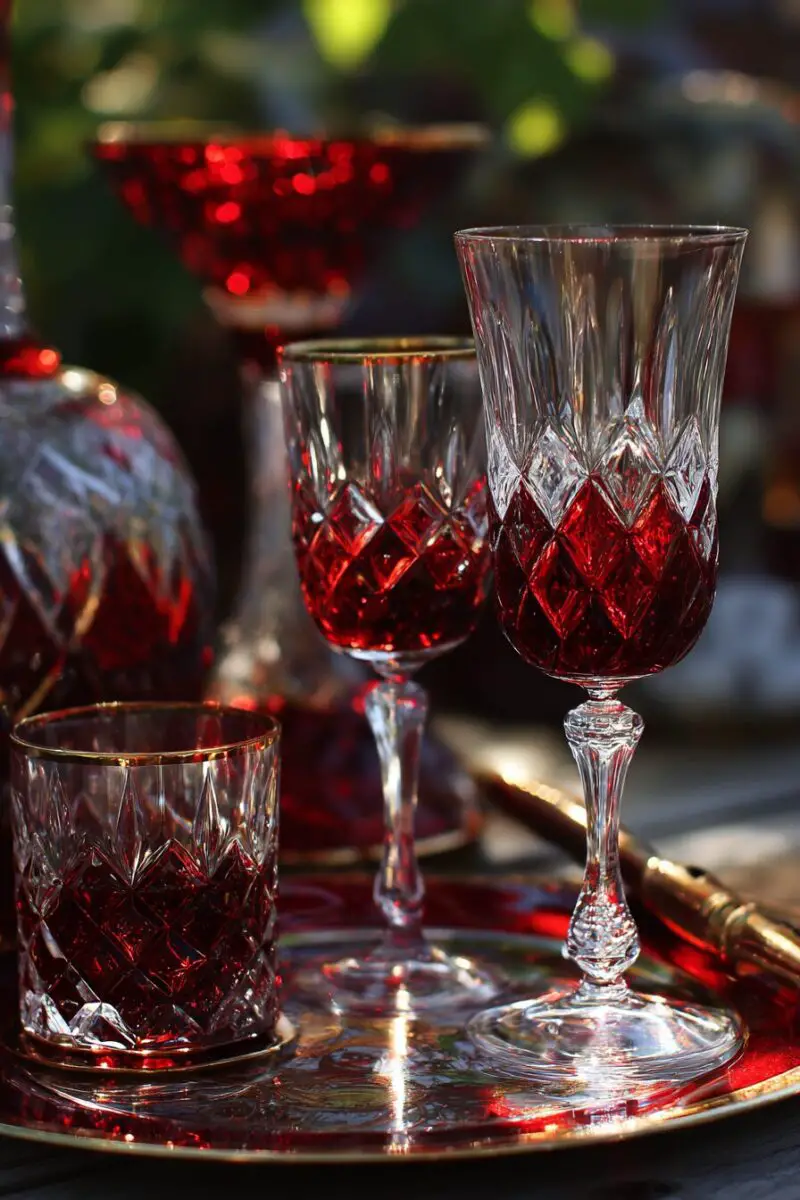
Bohemian ruby red glassware stands as perhaps the most instantly recognizable and dramatically beautiful category of antique crystal, with its deep crimson hue that seems to glow from within when light passes through it.
These magnificent pieces originate from what is now the Czech Republic, a region historically known as Bohemia that became the undisputed center of colored glass production during the 17th through 19th centuries.
The secret behind the distinctive ruby red color lies in the addition of gold chloride to the molten glass mixture—an expensive process discovered by Johann Kunckel in the 1670s that literally incorporated precious metal into each piece.
True antique Bohemian ruby glass appears almost black when viewed in dim lighting, but transforms into a vivid, luminous red when held up to light—a dramatic effect that has captivated collectors for centuries.
The most valuable Bohemian pieces feature “flashed” ruby glass, where a thin layer of ruby-colored glass is applied over clear crystal, allowing artisans to cut through the red layer to create stunning contrasts between colored and clear areas.
Master Bohemian craftsmen elevated their art through complex engraving techniques, often depicting hunting scenes, castles, or pastoral landscapes that appear as white or clear designs against the ruby background.
Unlike the more geometric patterns of English or Irish crystal, Bohemian ruby glassware often features flowing, naturalistic designs influenced by the region’s embrace of Art Nouveau aesthetics in the late 19th century.
Collectors particularly prize the biedermeier period pieces (1815-1848) that combine ruby glass with gilt decoration, creating opulent objects that perfectly expressed the emerging middle-class luxury market of Central Europe.
Authentic antique Bohemian glass often includes raised enamel work in white, gold, or other contrasting colors that add dimensional texture to the smooth ruby surface—a painstaking decorative technique requiring multiple firings.
The most exceptional examples include cameo glass techniques, where multiple layers of different colored glass are applied and then selectively cut away to create scenes with remarkable depth and detail.
When examining potential purchases, always check for the characteristic pontil mark—a rough spot on the base where the glassblower’s rod was attached—as this indicates genuine hand-blown construction rather than molded reproduction.
The weight of authentic Bohemian crystal offers another authentication clue, as the high lead content gives these pieces a substantial heft that distinguishes them from lighter modern reproductions.
Beyond decorative items, Bohemian craftsmen created functional ruby glassware including wine glasses, decanters, and liqueur sets that transformed everyday drinking into a visually spectacular experience.
The romantic appeal of these pieces extends beyond their beauty—they were often created as betrothal or wedding gifts, with couples’ initials or commemorative dates delicately engraved into the ruby surface.
Caring for these treasures requires avoiding dishwashers entirely, hand washing with mild soap, and storing them away from direct sunlight that can gradually fade the intense ruby color to a less desirable pinkish hue.
TRENDING NOW
Explore Magic With 10+ Afrohemian Decor IdeasVictorian Cranberry Glass

Victorian cranberry glass captures the essence of 19th-century opulence with its distinctive pinkish-red hue that varies from delicate rose to deep raspberry, depending on the gold content in the mixture.
This captivating glass variety experienced its heyday during Queen Victoria’s reign (1837-1901), when it adorned fashionable parlors throughout Britain and America as a symbol of refined taste and prosperity.
The secret to creating authentic cranberry glass involved adding gold chloride to the molten glass mixture—making these pieces literally infused with precious metal and explaining both their beauty and their historical value.
Unlike the deeper ruby glass from Bohemia, Victorian cranberry glass presents a more translucent appearance that allows light to penetrate more fully, creating a warm, glowing effect that seems to radiate from within the piece.
The most prized cranberry glass features the “Mary Gregory” decoration style—white enamel paintings of Victorian children at play, named after an American decorator although actually originating in Bohemian glasshouses.
Victorian glassblowers created extraordinary cranberry glass epergnes (table centerpieces) featuring multiple applied glass flowers or trumpet-shaped vases emerging from a central bowl—spectacular conversation pieces that dominated formal dining tables.
The “opalescent” or “cased” cranberry pieces represent particularly valuable variations, where an inner layer of white glass creates a frosted edge effect that transitions into the clear cranberry body.
Authentic period cranberry glass often features applied decoration in contrasting colors—delicate clear glass threads, crimped ribbons, or tiny flowers and leaves in white, green, or blue glass attached to the cranberry body while still hot.
Collectors particularly value cranberry glass oil lamps, where the warm glow of firelight through the reddish glass created an unmatched ambient lighting effect that even modern electric adaptations cannot fully replicate.
The characteristic pontil mark—a rough area on the base where the glassblower’s rod was attached—provides important authentication evidence, as does the slightly uneven thickness typical in hand-blown Victorian glass.
Beyond decorative items, Victorian manufacturers produced complete cranberry glass table services, including water pitchers, tumblers, and wine glasses that transformed everyday dining into a visual celebration.
The most exceptional examples combine cranberry glass with silver mounts—sugar bowls with silver lids, pitchers with silver handles, or vases with ornate silver collars that perfectly express the Victorian love of material richness and decoration.
When examining potential purchases, inspect carefully for modern reproductions, which typically lack the characteristic “fire polish” finish achieved when Victorian craftsmen briefly reheated the piece to smooth out tool marks.
True Victorian cranberry glass often includes “controlled bubbles”—small air bubbles intentionally introduced into the glass as decoration rather than being seen as flaws, creating a subtle sparkle effect as light passes through them.
Caring for these treasures requires avoiding ultraviolet exposure that can fade the distinctive color, cleaning with diluted ammonia rather than soap (which leaves residue), and handling with cotton gloves to prevent oils from your fingers degrading the surface over time.
Lalique Art Nouveau Vases
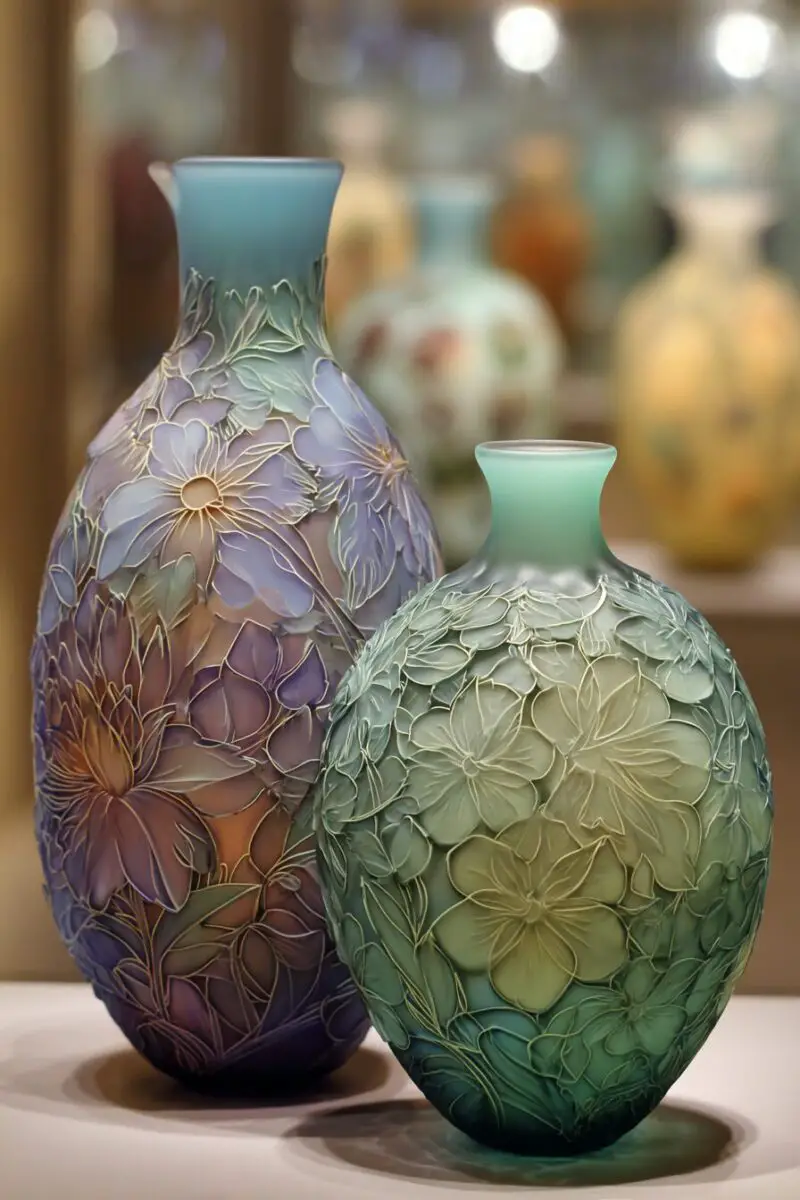
Lalique Art Nouveau vases represent the revolutionary moment when glass transcended mere functionality to become recognized as fine art, thanks to the genius of René Lalique (1860-1945).
These extraordinary creations blurred the boundaries between jewelry, sculpture, and glassware, with Lalique bringing his jeweler’s sensibility to the medium of glass during the height of the Art Nouveau movement (1890-1910).
Unlike traditional cut crystal that relies on geometric patterns, Lalique’s vases feature sculptural, nature-inspired designs—flowing hair of maidens, intertwined serpents, or delicate dragonflies that seem frozen in glass but paradoxically full of movement.
The most valuable Lalique vases bear his early signature “R.
Lalique” (used until approximately 1945) with pieces signed simply “Lalique” indicating they were produced after René’s death, when the company continued under his son Marc’s direction.
Authentic Art Nouveau period Lalique typically features a frosted or satin finish achieved through acid-etching, creating a dream-like quality that distinguishes his work from the brilliant clarity prized in traditional crystal.
Collectors particularly treasure Lalique’s cire perdue (lost wax) vases—unique pieces made using a technique where each mold was destroyed after a single use, making every example truly one-of-a-kind.
The revolutionary “double casing” technique Lalique perfected involved blowing one layer of colored glass inside another, allowing him to create subtle depth effects impossible in single-layer glass production.
Unlike many contemporaries, Lalique embraced industrial production methods alongside handcrafting, making his aesthetic vision more widely accessible while maintaining exceptional quality and artistic integrity.
When examining potential Lalique purchases, look for the patina that develops naturally on authentic pieces—a slight yellowing on colorless glass or a subtle darkening in recessed areas that forgeries typically cannot replicate convincingly.
The most sought-after Lalique vases feature opalescent glass—a technical tour de force where the glass appears milky blue when light shines through it but amber or pink when light reflects from its surface.
Beyond their aesthetic value, these vases connect you directly to the intellectual ferment of Belle Époque Paris, when artists across all media were rejecting Victorian stuffiness in favor of sinuous, sensual natural forms.
Authentic Lalique vases possess a notable heft, as René preferred thicker glass walls that allowed for deeper carving and more pronounced relief work than was typical in conventional glassware of the period.
The distinctive “dancing nymphs” and “bacchantes” vases—featuring nude female figures in relief around the circumference—represent Lalique’s most iconic and valuable designs, with original examples regularly commanding six-figure prices.
Caring for these masterpieces requires avoiding chemical cleaners entirely, using only lukewarm water and mild soap, followed by thorough drying with soft, lint-free cloths to prevent water spotting.
The cultural significance of these vases extends beyond decorative arts—they embodied the Art Nouveau movement’s philosophical rejection of industrialization in favor of organic forms, even as Lalique ironically used industrial methods to realize his artistic vision.
TRENDING NOW
13 Chic Feminine Decor Ideas For Your ApartmentSteuben Art Glass Pieces
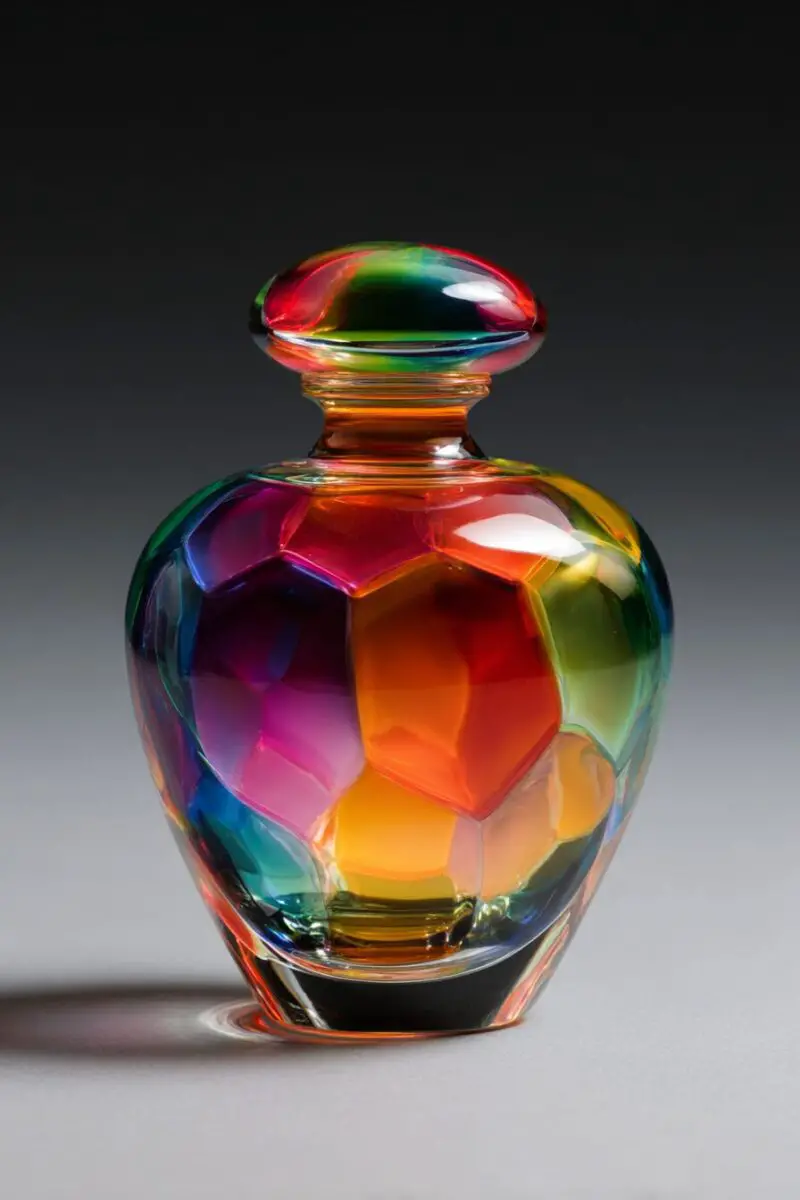
Steuben art glass pieces represent America’s most significant contribution to the world of fine crystal, establishing a distinctly modernist aesthetic that contrasted dramatically with the ornate European traditions.
Founded in 1903 in Corning, New York, Steuben developed a proprietary crystal formula containing 30% lead that creates an exceptional clarity and brilliance unmatched by other manufacturers—so pure that optical scientists have used it for precision lenses.
The revolutionary “Aurene” technique—developed by Frederick Carder during Steuben’s early years—created iridescent surfaces reminiscent of ancient Roman glass, with gold Aurene producing a warm honey color and blue Aurene yielding an otherworldly azure sheen.
Unlike European houses that emphasized colored glass, Steuben achieved its greatest acclaim with perfectly colorless crystal that emphasized form, proportion, and the interaction between light and glass rather than decorative cutting or applied color.
Collectors particularly prize the art deco period Steuben pieces (1920s-1930s) featuring geometric shapes, minimal ornamentation, and perfectly controlled bubbles or air twists that create internal visual interest.
The most valuable Steuben works are those designed by renowned artists through the company’s groundbreaking collaborator program, which invited figures like Salvador Dalí, Georgia O’Keeffe, and Henri Matisse to create limited edition designs.
Authentic Steuben crystal produces an extraordinary resonance when struck gently—a clear, sustained ring that continues notably longer than lesser crystal, demonstrating the molecular perfection of the material.
The signature Steuben “air twist” technique creates spiral patterns of tiny air bubbles within solid crystal stems or vases—each one meticulously controlled to create rhythmic internal patterns visible from every angle.
When examining potential Steuben purchases, always look for the acid-etched signature—typically a simple “Steuben” on older pieces or the distinctive diamond-S mark introduced in the 1950s—usually placed discreetly on the bottom of the piece.
Beyond decorative objects, Steuben created extraordinary animal sculptures in solid crystal that capture the essential spirit of each creature while reducing its form to the purest possible expression—technical and artistic feats requiring remarkable skill.
The legendary “Gazelle Bowl” designed by Sidney Waugh in 1935 epitomizes Steuben’s modernist approach—a perfectly proportioned vessel adorned with leaping gazelles in low relief that appears deceptively simple yet requires over thirty separate manufacturing steps.
Unlike mass-produced crystal, each Steuben art piece undergoes rigorous quality control, with up to 40% of production rejected for minor flaws invisible to untrained eyes but deemed unacceptable by the company’s exacting standards.
The “Steuben look” influenced American design far beyond glassware, helping establish a distinctly American aesthetic that valued restraint, precision, and understated elegance over the ornate decorative traditions of European crystal.
Caring for these masterpieces requires avoiding temperature extremes that can stress the crystal, cleaning with mild detergent and soft cloths, and displaying them where light can interact with the optically perfect material to reveal its exceptional properties.
The cultural significance of Steuben extends into diplomatic history, as these pieces have been the official state gift from American presidents to visiting dignitaries since the Truman administration—a tradition recognizing their status as the pinnacle of American craftsmanship.
Venetian Murano Glass Goblets

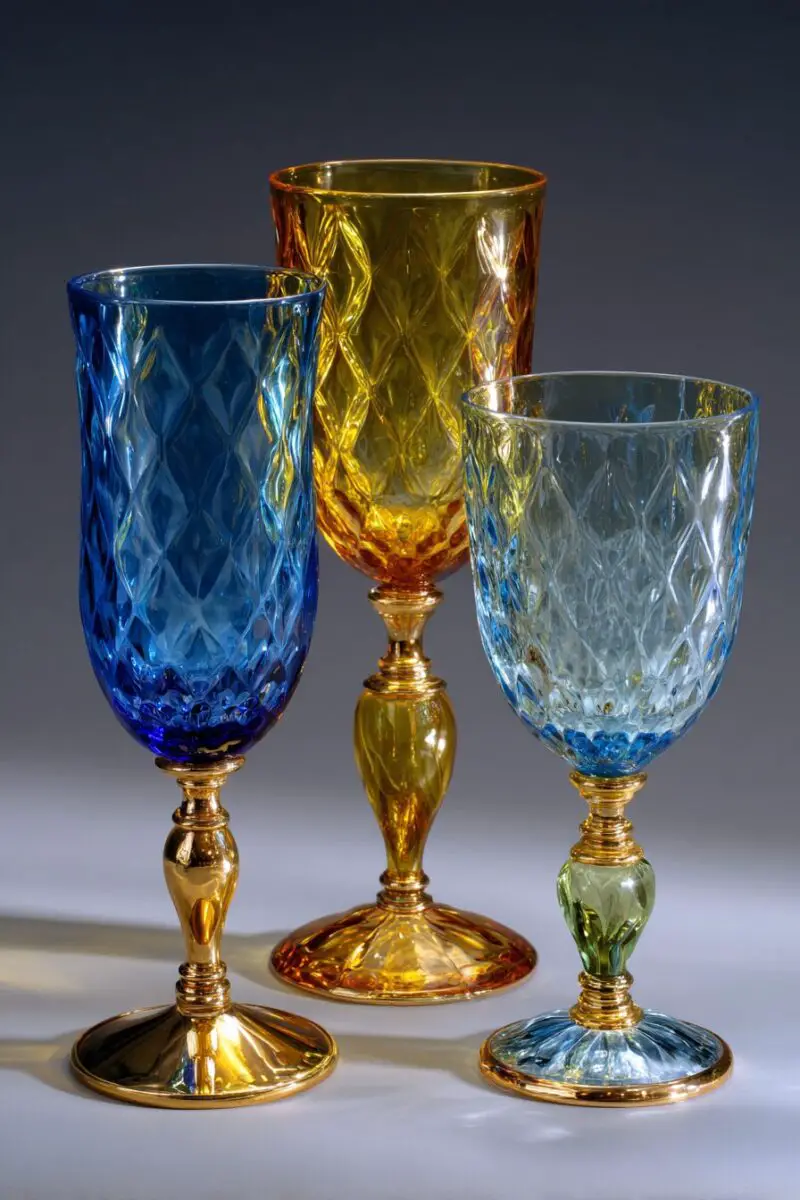
Venetian Murano glass goblets represent perhaps the longest continuous glassmaking tradition in the world, with techniques developed on this tiny Italian island near Venice dating back over 1,500 years.
These extraordinary drinking vessels connect you directly to Renaissance banquet tables, where their brilliant colors and fantastical forms declared the wealth and artistic sophistication of their owners.
Unlike the geometric precision of northern European crystal, Murano goblets celebrate asymmetry and organic forms—dragons coiling around stems, wings unfurling from bowls, or sea creatures emerging from molten glass as if by magic.
The legendary “lattimo” technique—developed by Murano masters in the 15th century—created milky white glass that mimicked the appearance of porcelain, allowing Venetian glassmakers to compete with Chinese imports while maintaining their glassmaking traditions.
Authentic antique Murano goblets feature “aventurine” glass—a technically demanding process where copper particles are suspended in the glass, creating a sparkling effect resembling gold dust floating within the material.
Collectors particularly prize the “vetro a reticello” examples, where two layers of glass with embedded air bubbles are twisted in opposite directions, creating a perfect diamond pattern of tiny air bubbles captured between glass layers.
The most valuable Murano goblets often incorporate multiple glassmaking techniques in a single piece—perhaps combining lattimo, aventurine, and reticello methods alongside applied sculptural elements, demonstrating the comprehensive mastery of Murano artisans.
Unlike machine-made glassware, each antique Murano goblet bears subtle variations and “imperfections” that reveal its handmade nature—slightly asymmetrical bowls, variations in stem thickness, or traces of the pontil rod on the base.
When examining potential Murano purchases, look for the characteristic “sommerso” technique—layers of different colored glass that appear to be “submerged” within each other, creating depth effects impossible to achieve in single-layer glass.
Beyond their visual splendor, these goblets tell the story of closely guarded trade secrets—Murano glassmakers were forbidden to leave the island on pain of death during the Renaissance, as the Venetian Republic considered their skills a national treasure.
The extraordinary “cristallo” technique—developed by Angelo Barovier around 1450—created glass of unprecedented clarity through purification processes so secret they were passed down orally within families for centuries.
Authentic Murano goblets from the 16th through 18th centuries often feature thin, almost impossibly delicate stems with lions, dragons, or birds incorporated into the design—showcasing the Venetian mastery of working with glass at extremely high temperatures.
The cultural significance of these pieces extends beyond their beauty—they represent Venice’s position at the crossroads of East and West, incorporating Byzantine, Islamic, and Asian influences into distinctly European luxury objects.
Caring for these treasures requires understanding that antique Murano glass often contains unstable chemical compositions that can deteriorate when exposed to modern cleaning products—only distilled water and the gentlest handling can preserve their integrity.
The romantic history of these goblets includes their use in elaborate betrothal ceremonies, where the delicate vessels symbolized both the beauty and fragility of marriage commitments among Venetian nobility.
Cut Crystal Punch Bowls
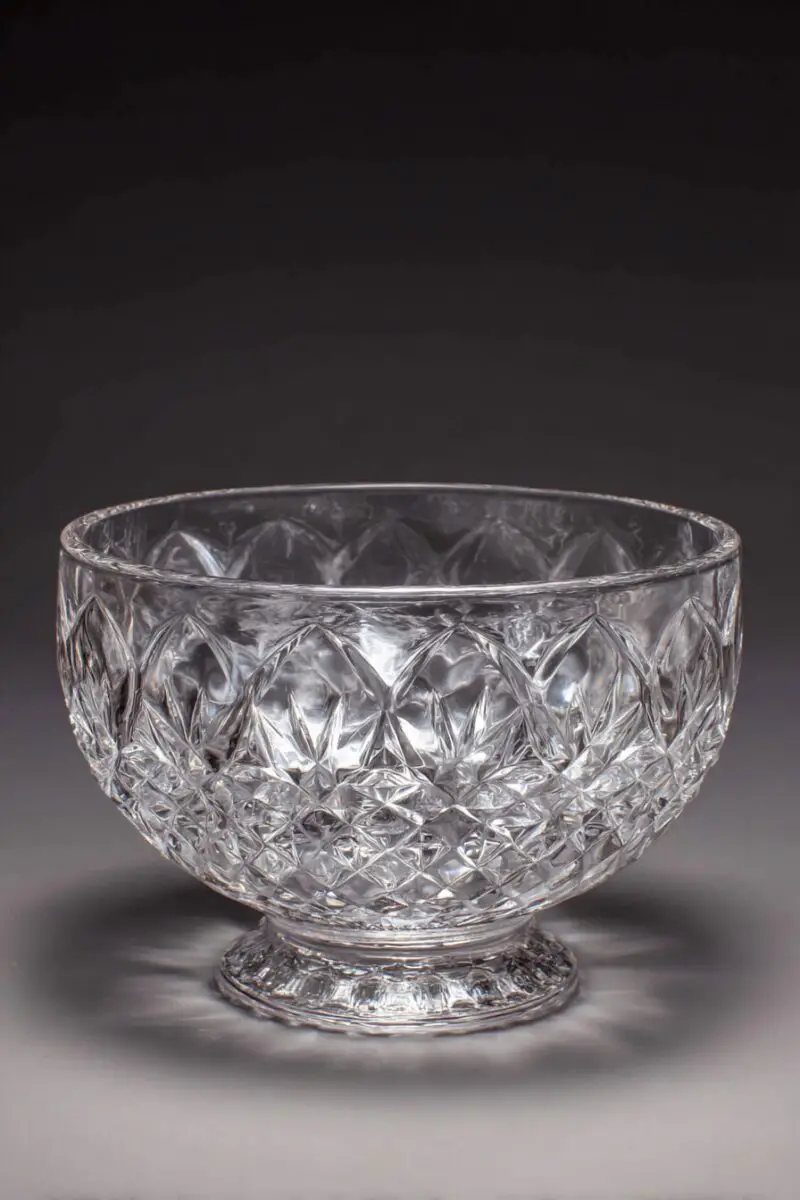
Cut crystal punch bowls represent the spectacular centerpieces of Victorian and Edwardian social gatherings, where their prismatic sparkle created instant atmosphere under gaslight or candlelight.
These magnificent vessels tell the story of punch itself—a beverage whose very name derives from the Hindi word “panch” meaning five, referring to the original five ingredients that British colonial officials brought back from India in the 17th century.
Unlike more delicate glassware, authentic antique punch bowls feature substantial walls—often nearly half an inch thick—providing the depth necessary for complex cutting patterns while withstanding the weight of several gallons of liquid.
The most valuable examples come from renowned factories like Waterford, Baccarat, or Dorflinger, whose craftsmen developed signature cutting patterns that collectors can identify at a glance, much like recognizing a painter’s distinctive brushwork.
Authentic period punch bowls often include their original accessories—matching ladles with crystal handles, a complete set of matching cups (typically a dozen), and occasionally a footed plateau or stand that elevated the bowl above the table.
Collectors particularly prize the American Brilliant Period pieces (1876-1917), which represented the pinnacle of American glass cutting with incredibly deep, intricate patterns requiring weeks of skilled hand labor to complete.
The characteristic “hobstar” pattern—a deeply cut star with a raised center point, surrounded by radiating fans and split bamboo motifs—appears frequently on the finest punch bowls, creating spectacular light refractions from every angle.
Unlike modern reproductions, antique crystal punch bowls produce a distinctive bell-like tone when gently tapped with a wooden spoon—a resonance that reveals both the high lead content and the molecular perfection of hand-finished crystal.
When examining potential purchases, always check the underside of the bowl for the characteristic “blank” finish—a slight roughness that indicates the piece was hand-polished rather than fire-polished, as the latter technique would have rounded off the sharp edges of the cutting.
Beyond their decorative appeal, these bowls connect you directly to the elaborate social rituals of the 19th century, when punch service represented a crucial element of hospitality and the quality of one’s crystal signaled social standing.
The extraordinary weight of authentic period punch bowls—often 15 pounds or more when empty—required special sideboard furniture designed specifically to display and support these massive crystalline showpieces.
Authentic antique punch bowls from the Georgian period (1714-1837) often feature more restrained cutting patterns emphasizing broad panels and fan motifs, contrasting with the later Victorian preference for every available surface to be elaborately decorated.
The cultural significance of these pieces extends beyond mere dining—they were often presented as wedding gifts or commemorative items, with important dates or family crests sometimes delicately engraved among the cutting patterns.
Caring for these treasures requires avoiding modern dishwashers entirely, hand washing with mild soap and distilled water (to prevent mineral deposits), and careful drying with linen cloths that won’t leave fibers on the crystal surface.
The romantic history of these bowls includes their role in traditional wassailing ceremonies, debutante balls, and holiday gatherings—making them not just beautiful objects but vessels that literally contained shared memories across generations.
Depression Glass Collections
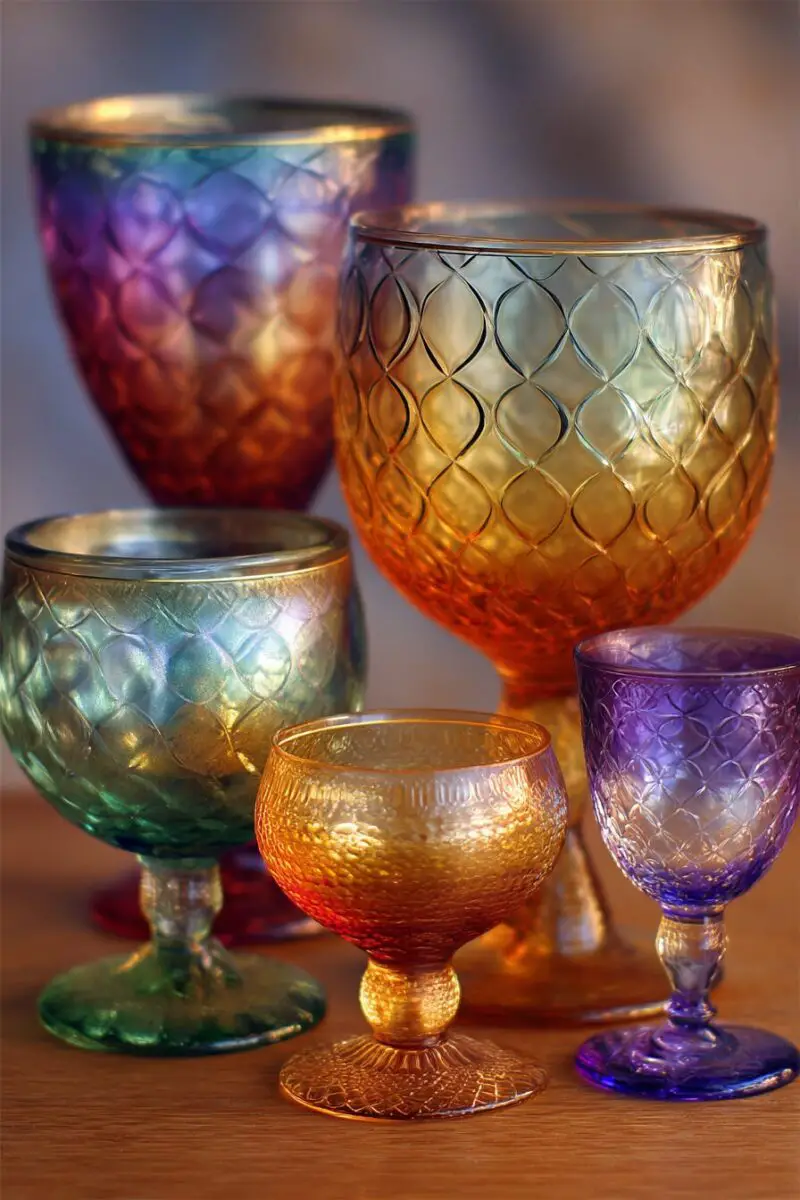
Depression glass collections offer a unique window into America’s past, where these colorful, mass-produced treasures brought affordable beauty into homes during the nation’s darkest economic hours of the 1930s.
Unlike the hand-crafted European crystal that preceded it, Depression glass was manufactured using innovative mechanical pressing techniques that allowed it to be produced so inexpensively that it was often given away as promotional items at movie theaters or packed as incentives in everyday products like flour and oatmeal.
The distinctive pastel colors—pink, green, amber, blue, and yellow—were not just aesthetic choices but practical ones, as manufacturers added these hues to mask imperfections in the inexpensive glass while simultaneously creating cheerful tableware that brightened dreary Depression-era homes.
Collectors particularly prize complete sets in patterns like “Cameo,” “Mayfair,” “American Sweetheart,” and “Princess,” which demonstrate how these humble objects allowed even struggling families to maintain a sense of domestic dignity during difficult times.
Authentic Depression glass bears the characteristic mold marks, tiny bubbles, and occasional production flaws that tell the story of its rapid, economical manufacturing process—imperfections that would have been unacceptable in fine crystal but now serve as authentication markers.
The most valuable Depression glass pieces are those in rare colors like tangerine, lavender, and teal, or specialized serving pieces like cookie jars, butter dishes, and canister sets that were produced in smaller quantities than standard tableware.
Unlike fine crystal meant for occasional use, Depression glass was designed for daily service, making undamaged examples increasingly rare as pieces were broken through years of regular family meals rather than being carefully preserved as collectibles.
When examining potential purchases, look for the characteristic “fire-polished” finish—where pieces were briefly reheated after molding to smooth rough edges—as opposed to the cold-polished finish of later reproductions.
Beyond their aesthetic appeal, these colorful glass collections tell the story of American industrialization and democratization of design, where manufacturing innovations allowed ordinary families to own complete matched table services previously available only to the wealthy.
The patterns embossed into Depression glass often reflected the era’s design sensibilities—Art Deco geometric motifs, streamlined modern forms, or nostalgic colonial revival patterns that provided comforting visual connections to a seemingly more stable American past.
Authentic Depression glass from companies like Hazel Atlas, Federal Glass, and MacBeth-Evans now commands surprising prices at auction, with rare pieces selling for hundreds or even thousands of dollars—an ironic fate for tableware originally made to be virtually free.
The cultural significance of these collections extends beyond mere dishes—they represent American resilience during hardship, when families maintained appearances and social connections through continued entertaining despite severe economic constraints.
Complete Depression glass table settings reveal the elaborate mid-century American dining culture, with specialized pieces for every conceivable function—specific dishes for celery, cheese, pickles, olives, and nuts indicating the importance of proper presentation regardless of economic circumstances.
Caring for these treasures requires understanding their more delicate nature compared to lead crystal—they should never be washed in dishwashers, subjected to sudden temperature changes, or cleaned with abrasive materials that can damage their relatively soft surfaces.
The warm nostalgic appeal of Depression glass collections continues to grow as new generations discover these cheerful, accessible antiques that connect them to their grandparents’ and great-grandparents’ experiences during a pivotal period in American history.
Libbey Brilliant Period Crystal
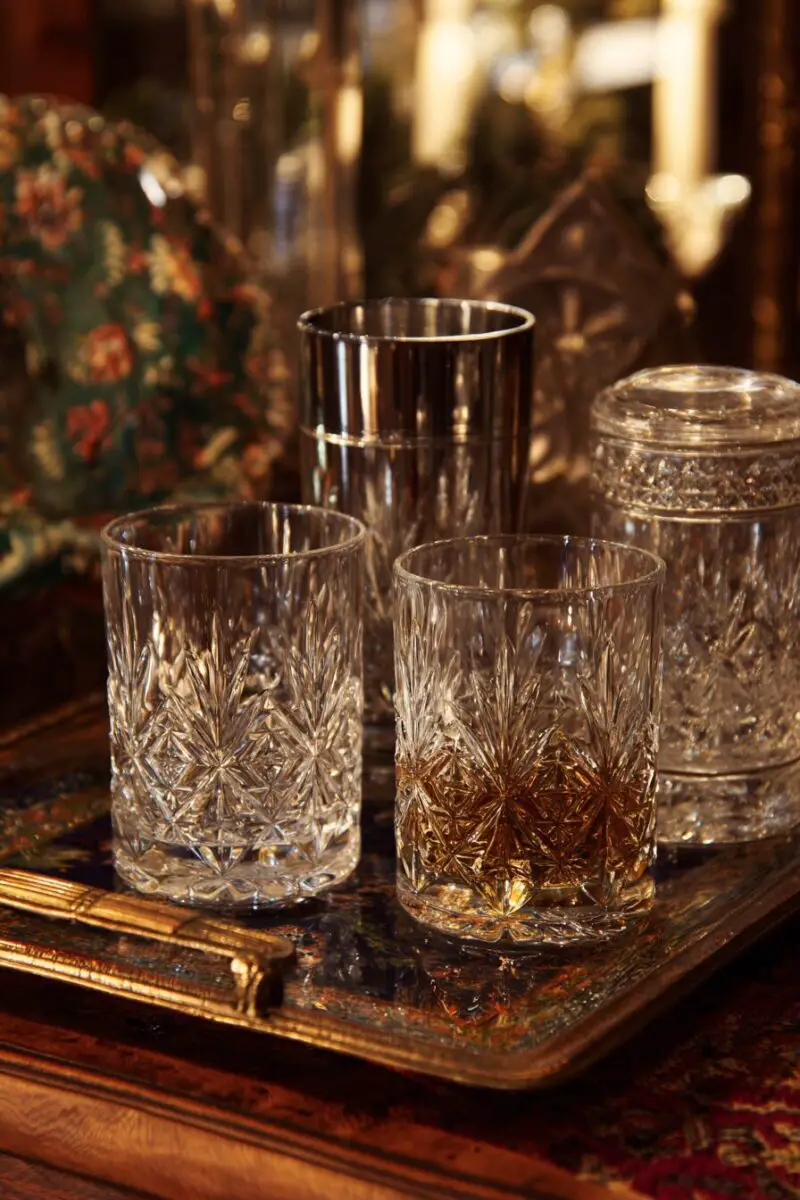
Libbey Brilliant Period crystal represents America’s golden age of glass cutting, when Toledo, Ohio became known as the “Crystal City” and produced cut glass rivaling or surpassing the finest European makers between 1876 and 1915.
These extraordinary pieces emerged during America’s Gilded Age, when industrial fortunes created a new class of wealthy patrons eager to display their prosperity through elaborate dining services and decorative objects for their mansions.
Unlike European traditions that emphasized restraint, Brilliant Period Libbey crystal embraced maximum visual impact with incredibly deep cutting—sometimes removing up to a third of the original glass blank—creating prismatic effects of unmatched complexity and brilliance.
Collectors particularly prize Libbey’s patented “Colonna” pattern—featuring a distinctive combination of hobstars, fans, and strawberry diamond motifs—which won grand prizes at the 1904 St.
Louis World’s Fair and became the company’s signature achievement.
Authentic Libbey pieces from this era often bear an acid-etched mark featuring an uppercase “L” inscribed within a circle, though unmarked pieces are common as the company sometimes used paper labels that have long since disappeared.
The most valuable Libbey examples include monumental punch bowls, enormous centerpiece vases, and complete table services—pieces that required exceptional skill to cut and represented substantial investments even for wealthy families of the period.
Unlike later mass-produced crystal, each Brilliant Period Libbey piece underwent approximately 30 distinct manufacturing steps, from initial glass blowing through successive stages of cutting, polishing, and inspection, often taking weeks to complete a single important piece.
When examining potential Libbey purchases, look for the characteristic “blank” finish on the base—a slightly rough texture indicating the piece was hand-polished rather than fire-polished, as the latter would have softened the sharp edges essential to proper light refraction.
Beyond their decorative splendor, these pieces tell the story of American technological innovation, as Libbey pioneered electric cutting wheels that replaced traditional foot-powered wheels, allowing for more precise cutting while improving working conditions for artisans.
The extraordinary craftsmanship of Brilliant Period Libbey crystal becomes apparent when you examine where cutting patterns intersect—each junction perfectly aligned with no overlapping or mismatched elements, demonstrating the mathematical precision of master cutters.
Authentic period Libbey features what collectors call “mercury-like” brilliance—an extraordinary light-reflecting quality resulting from perfect cutting angles combined with lead content between 36% and 42%, significantly higher than modern crystal standards.
The cultural significance of these pieces extends beyond decorative arts—they represent America’s industrial coming-of-age, when domestic manufacturers deliberately challenged European dominance in luxury goods and succeeded in creating a distinctly American aesthetic.
Caring for these masterpieces requires understanding that the deep cutting creates thousands of potential stress points—temperature extremes must be avoided, and washing should be done with distilled water to prevent mineral deposits that can dull the brilliant surfaces.
Complete table settings of Brilliant Period Libbey now command extraordinary prices, with important pieces regularly achieving five-figure sums at specialized auctions—ironic considering the company’s decline after 1915 when changing tastes favored the simpler aesthetic of modernism.
The romantic history of these pieces includes their presence at America’s most legendary social gatherings—from Newport cottage “dinners” for 80 guests to White House state functions, where their spectacular sparkle literally illuminated the rooms with thousands of prismatic reflections under candlelight and early electric chandeliers.
Crystal antiques offer more than just visual beauty—they provide tangible connections to history, craftsmanship traditions, and the social customs of previous eras.
Each piece tells a story through its cutting patterns, manufacturing techniques, and the occasions it was designed to enhance.
As you explore the world of antique crystal, remember that these enduring treasures have already survived generations—and with proper care, they’ll continue bringing beauty and history into homes for generations to come.

